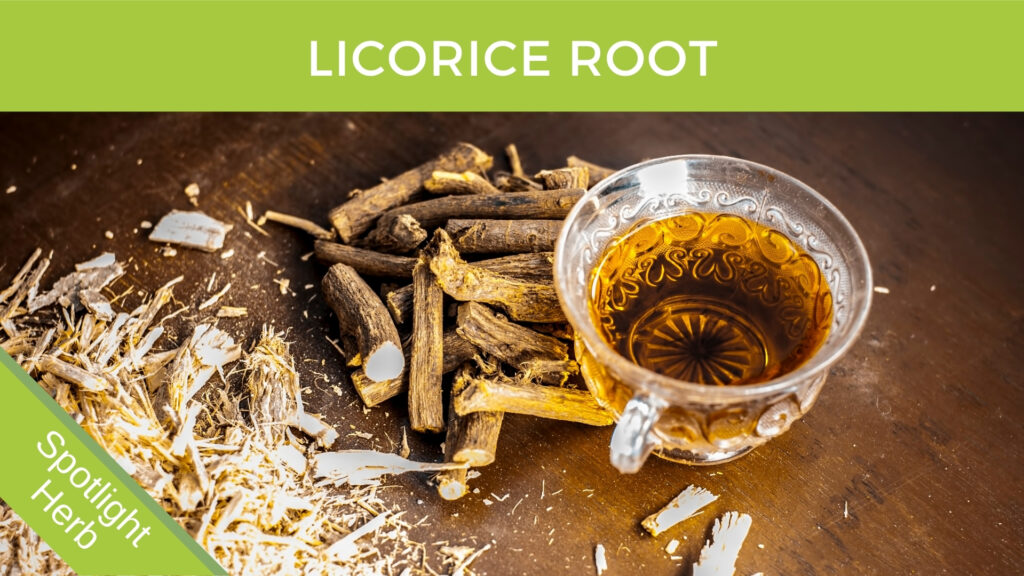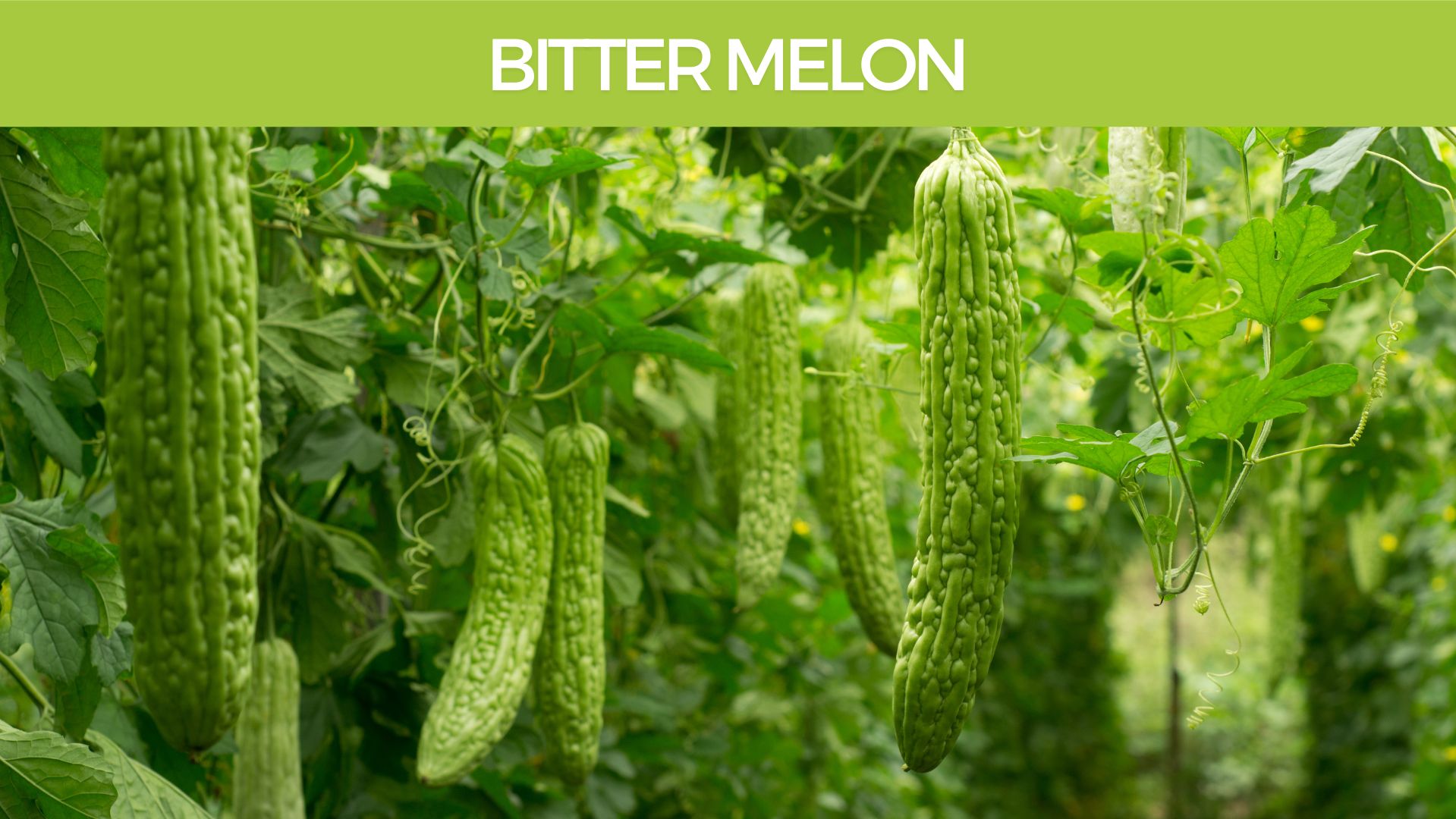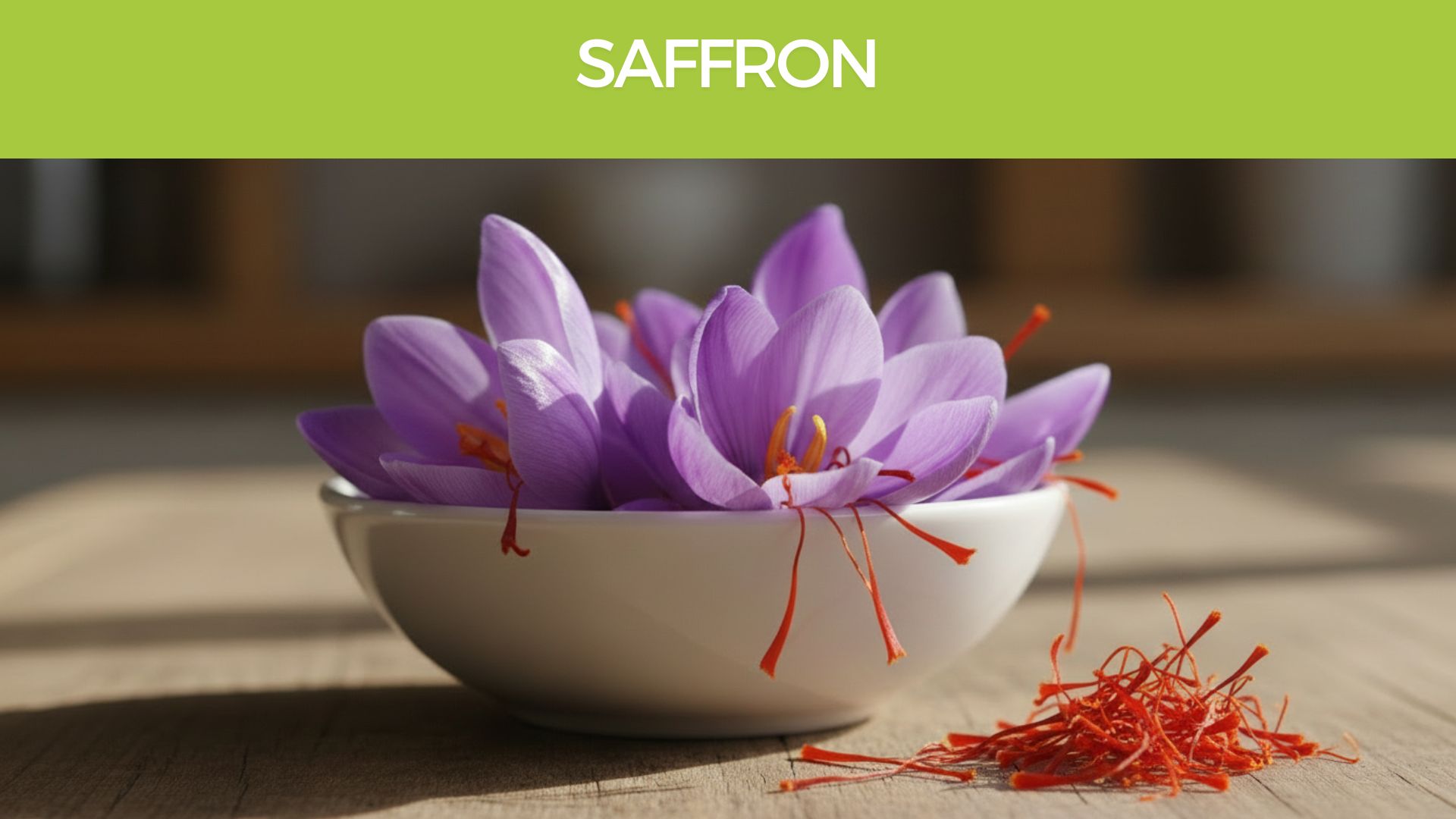- 2 years ago
- 9Minutes
- 1962Words
- 1907Views
You might think Licorice, isn’t that a candy?
Yes, Licorice root is used to flavor the licorice sweets and natural licorice extract is often used for this purpose.
In this article, we are looking at the amazing health benefits of this overlooked herbal medicine.
(1) A drug over the millennia: pharmacognosy, chemistry, and pharmacology of licorice. PUBMED https://www.ncbi.nlm.nih.gov/pubmed/11082698
(2) University of Maryland Medical Centre. http://umm.edu/health/medical/altmed/herb/licorice
(3) Effect of Root Extracts of Medicinal Herb Glycyrrhiza glabra on HSP90 Gene Expression and Apoptosis in the HT-29 Colon Cancer Cell Line. PUBMED https://www.ncbi.nlm.nih.gov/pubmed/26745117
(4) Can licorice lick colon cancer? PUBMED https://www.ncbi.nlm.nih.gov/pmc/articles/PMC2662579/
(5) The antiviral and antimicrobial activities of licorice, a widely-used Chinese herb PUBMED https://www.ncbi.nlm.nih.gov/pmc/articles/PMC4629407/
(6) The Pharmacological Activities of Licorice. PUBMED https://www.ncbi.nlm.nih.gov/pubmed/26366756
(7) [Anti-virus research of triterpenoids in licorice]. PUBMED https://www.ncbi.nlm.nih.gov/pubmed/24520776
(8) Glycyrrhizic acid as the antiviral component of Glycyrrhiza uralensis Fisch. against coxsackievirus A16 and enterovirus 71 of hand foot and mouth disease. PUBMED https://www.ncbi.nlm.nih.gov/pubmed/23454684
(9) Licorice WebMD http://www.webmd.com/vitamins-supplements/ingredientmono-881-licorice.aspx?activeingredientid=881
(10) Glycyrrhizin inhibits influenza A virus uptake into the cell. PUBMED https://www.ncbi.nlm.nih.gov/pubmed/19416738
(11) Special licorice extracts containing lowered glycyrrhizin and enhanced licochalcone A prevented Helicobacter pylori-initiated, salt diet-promoted gastric tumorigenesis. PUBMED https://www.ncbi.nlm.nih.gov/pubmed/24646026
(12) To evaluate of the effect of adding licorice to the standard treatment regimen of Helicobacter pylori. PUBMED https://www.ncbi.nlm.nih.gov/pubmed/27614124
(13) Dietary, non-microbial intervention to prevent Helicobacter pylori-associated gastric diseases. PUBMED https://www.ncbi.nlm.nih.gov/pmc/articles/PMC4481371/
(14) Aqueous extracts and polysaccharides from liquorice roots (Glycyrrhiza glabra L.) inhibit adhesion of Helicobacter pylori to human gastric mucosa. PUBMED https://www.ncbi.nlm.nih.gov/pubmed/19607905
(15) Liquorice in moderate doses does not affect sex steroid hormones of biological importance although the effect differs between the genders. PUBMED https://www.ncbi.nlm.nih.gov/pubmed/16462145
(16) Liquorice and soy sauce, a life-saving concoction in a patient with Addison’s disease. PUBMED https://www.ncbi.nlm.nih.gov/pubmed/17594790
(17) PUBMED https://www.ncbi.nlm.nih.gov/pmc/articles/PMC1700648/pdf/brmedj02293-0077a.pdf
(18) Herbal polysaccharides and cough reflex. PUBMED http://www.ncbi.nlm.nih.gov/pubmed/23597834
(19) An Extract of Glycyrrhiza glabra (GutGard) Alleviates Symptoms of Functional Dyspepsia: A Randomized, Double-Blind, Placebo-Controlled Study. PUBMED https://www.ncbi.nlm.nih.gov/pmc/articles/PMC3123991/
(20) Effects of two natural medicine formulations on irritable bowel syndrome symptoms: a pilot study. PUBMED https://www.ncbi.nlm.nih.gov/pubmed/20954962
(21) Glycyrrhizic acid inhibits virus growth and inactivates virus particles. PUBMED https://www.ncbi.nlm.nih.gov/pubmed/233133/
(22) Adjunct Therapy With Glycyrrhiza Glabra Rapidly Improves Outcome in Depression—A Pilot Study to Support 11-Beta-Hydroxysteroid Dehydrogenase Type 2 Inhibition as a New Target https://www.ncbi.nlm.nih.gov/pmc/articles/PMC7758437/
Description
Licorice (Glycyrrhiza glabra) has been used in food and as medicine for thousands of years. Also known as “sweet root,” licorice root contains a compound that is about 50 times sweeter than sugar. (2)
Licorice grows wild in some parts of Europe and Asia. A perennial that grows 3 to 7 feet high, licorice has an extensive branching root system. The roots are straight pieces of wrinkled, fibrous wood, which are long and cylindrical (round) and grow horizontally underground. Licorice roots are brown on the outside and yellow on the inside. Licorice supplements are made from the roots and underground stems of the plant. (2)
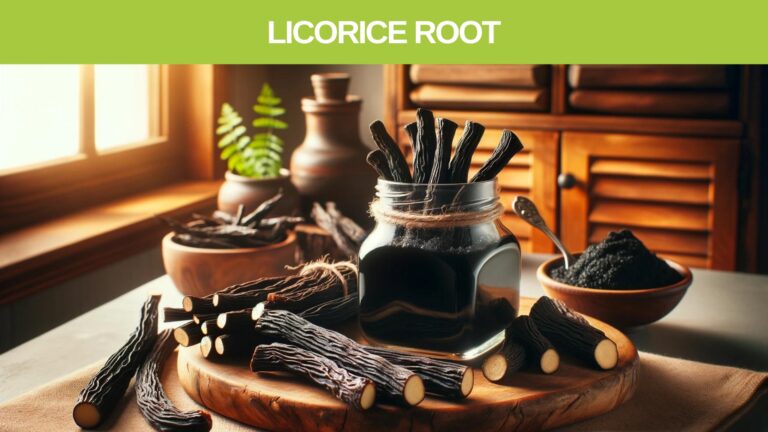
Traditional uses
Licorice, the root of Glycyrrhiza spp. (Fabaceae), has been used since ancient Egyptian, Greek, and Roman times in the West and since the Former Han era (the 2nd-3rd century B.C.) in ancient China in the East. In traditional Chinese medicine, licorice is one of the most frequently used drugs. (1)
In Japan, the oldest specimen of licorice introduced from China in the middle of the 8th century still exists in Shosoin, the Imperial Storehouse, in Nara. (1)
Licorice is used for various digestive system complaints including stomach ulcers, heartburn, colic, and ongoing inflammation of the lining of the stomach (chronic gastritis). Some people use licorice for a sore throat, bronchitis, cough, and infections caused by bacteria or viruses. (9)
Licorice is also used for osteoarthritis, systemic lupus erythematosus (SLE), liver disorders, malaria, tuberculosis, food poisoning, and chronic fatigue syndrome (CFS). (9)

Active constituents
Licorice contains more than 20 triterpenoids and nearly 300 flavonoids. Among them, glycyrrhizin (GL), 18β-glycyrrhetinic acid (GA), liquiritigenin (LTG), licochalcone A (LCA), licochalcone E (LCE), and glabridin (GLD) are the main active components that possess antiviral and antimicrobial activities.
GL the most important marker component in licorice, the development of GL preparations has a long history in China, from GL tablets to ammonium glycyrrhizinate, diammonium glycyrrhizinate, and magnesium isoglycyrrhizinate (MgIG). (5)
Pharmacology
In Japan for the past 60 years, a glycyrrhizin (GL) preparation has been used clinically as an antiallergic and anti-hepatitis agent. (1) This hepatoprotective effect has recently been explained as the inhibitory effects of GL and glycyrrhetinic acid (GA) on immune-mediated cytotoxicity against hepatocytes and on nuclear factor (NF)-kappa B, which activates genes encoding inflammatory cytokines in the liver. (1)
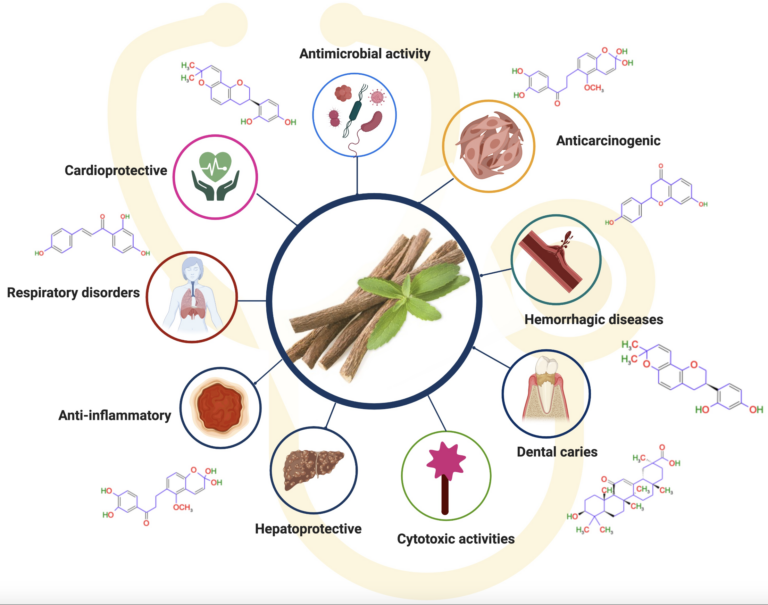
SCIENTIFIC EVIDENCE
In recent years, a lot of studies have reported that the active compounds isolated from licorice possess antitumor, antimicrobial, antiviral, anti-inflammatory, immunoregulatory, and several other activities that contribute to the recovery and protection of the nervous, alimentary, respiratory, and endocrine systems. (6)
Hormones and Stress
Liquorice in moderate doses does not affect sex steroid hormones of biological importance although the effect differs between the genders. (15)
Licorice has been shown to be useful when treating depression as it helps the body regulate cortisol levels. (22)
In one case of Addison’s disease (adrenal failure), the net effect of licorice consumption was potentiation of adrenocortical steroid production. (16)
The sodium-retaining properties of Licorice protected a patient from clinical adrenal insufficiency in the heat of Aden, where she lived as a soldier’s wife, and also masked many of the physical signs of this disease-for example, pigmentation. This is the second patient this Doctor encountered in which the ingestion of large amounts of liquorice has enabled a patient with Addison’s disease to escape from the clinical results of adrenal failure for a long period of time. (17)
Immunity
Immunomodulating effects of GL, GA, and DG derivatives, which induce interferon-gamma and some other cytokines, have been demonstrated in relation to their antiviral activities. Anti-inflammatory, antitumorigenic, and antimalarial effects of licorice flavonoids have also been investigated. (1)
Many studies found that several components were responsible for the antiviral and antimicrobial activities through different mechanisms. The development of effective and affordable licorice-related medicines could introduce dramatic improvements in treating the many prevalent diseases of third-world populations. It is hoped that the present work will facilitate the development of improved licorice preparations with antiviral and antimicrobial activities. (5)
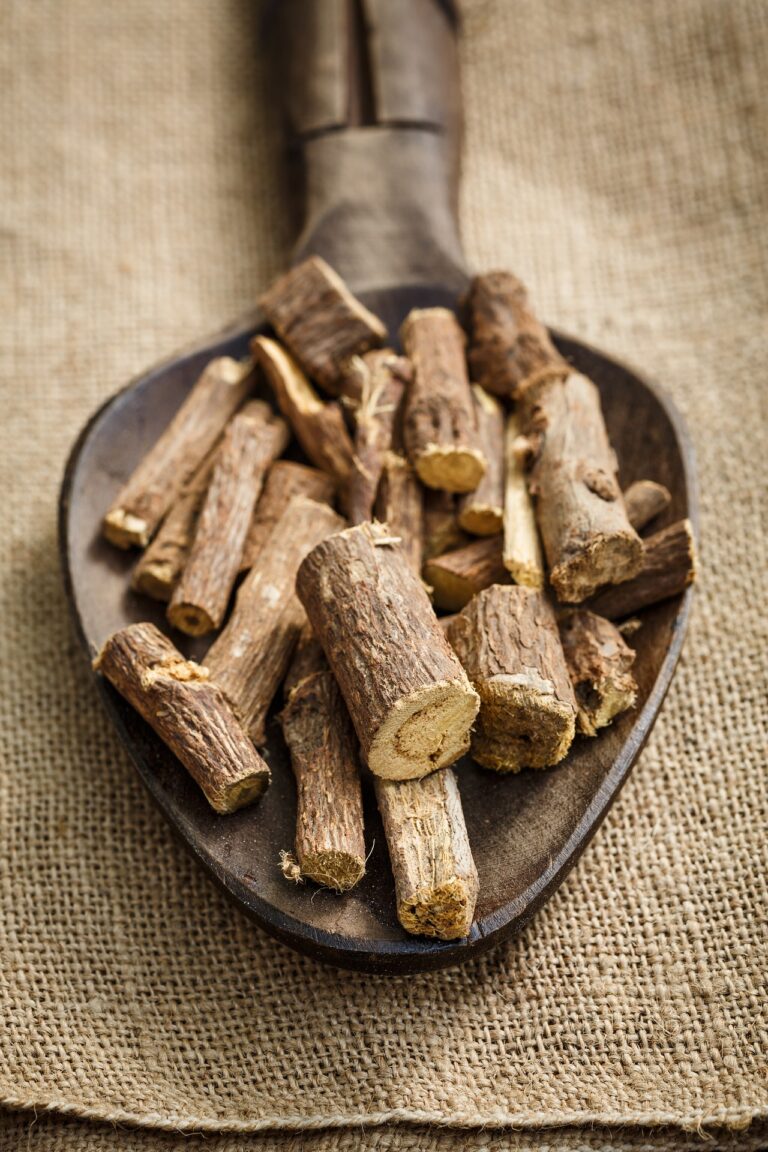
Anti-viral
In recent years, the broad-spectrum antiviral activity of many triterpenoids in licorice was confirmed, and these findings have become a hot spot of antiviral immunity. The triterpenoids of licorice has the potential to become a novel broad-spectrum antiviral medicine and will be widely used in clinical treatment. (7)
Another study revealed that Licorice inhibits enterovirus 71 and coxsackievirus with distinct mechanisms. (8)
Screening investigations in antiviral action of plant extracts have revealed that a component of Glycyrrhiza glabra roots, found to be glycyrrhizic acid, is active against viruses. We report here that this drug inhibits the growth and cytopathology of several unrelated DNA and RNA viruses, while not affecting cell activity and ability to replicate. In addition, glycyrrhizic acid inactivates herpes simplex virus particles irreversibly. (21)
Influenza virus
Detailed virus uptake analyses demonstrated reduced virus uptake in various glycyrrhizin (GL) treated cells. These observations lead to the conclusion, that the antiviral activity of GL is mediated by an interaction with the cell membrane which most likely results in reduced endocytotic activity and hence reduced virus uptake. (10)
Cough suppression
In the last decades, plant substances have become a leading form of treatment for many respiratory symptoms, including a cough. It has been shown that compounds purified from polysaccharides from Adhatoda vasica, Withania somnifera, and Glycyrrhiza glabra (Licorice) have various biological activities, such as antioxidant, anti-inflammatory, immunomodulating, antispasmodic action, or antiallergic properties, and they often act as cough suppressants. The strongest cough suppressing effect (81%) was found after the application of the extract from Licorice. (18)
Helicobacter and Peptic Ulcer
Since the discovery of Helicobacter pylori (H. pylori) infection as the major cause of gastroduodenal disorders including acute and chronic gastritis, gastro-duodenal ulcer, chronic atrophic gastritis, and gastric cancer almost three decades ago, the possibility of preventing these clinical diseases through eradicating H. pylori has been the focus of active research (13)
Licorice extracts can be anticipating substance against either H. pylori-induced gastritis or tumorigenesis based on potent antioxidative, anti-inflammatory and antimutagenic actions. (11)
The addition of licorice to an antibiotic regimen increases H. pylori eradication, especially in the presence of peptic ulcer disease. (12) For example, one study showed that licorice is as effective as bismuth in H. pylori eradication; therefore, in patients whose bismuth is contraindicated, licorice can be used safely instead. (13)
Carbenoxolon sodium, glycyrrhetinic acid (GA) hemisuccinate Na, has been prepared from licorice to treat a peptic ulcer in the UK. (1)
Aqueous extracts and polysaccharides from the roots of Glycyrrhiza glabra are strong antiadhesive systems, which may be used as potent tools for further development of cytoprotective preparations with anti-infectious potential. (14)
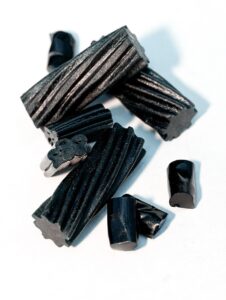
Indigestion
The findings of one randomized double-blind, placebo-controlled, clinical trial on the root extract of G. glabra, revealed a significant decrease in symptoms scores in concordance with improvements in almost all individual symptoms and found to be superior to the placebo group in the management of functional dyspepsia. (19)
Irritable Bowel Syndrome
A mixture of dried powdered slippery elm bark, lactulose, oat bran, and licorice root significantly improved both bowel habit and IBS symptoms in patients with constipation-predominant IBS. (20)
Anti-cancer
Results of one study showed that Glycyrrhiza glabra inhibited proliferation of cancer cells and down-regulation of gene expression which implied an ability of Glycyrrhiza glabra to induce cancer cell death confirming its anticancer property. (3)
Expression of 11βHSD2 has also been reported in cancers, most notably in endocrine tumors such as pituitary and adrenal adenomas, but also in osteosarcoma, renal, breast, and lung cancer cells. Studies demonstrate that gene silencing or pharmacological 11βHSD2 inhibition with the licorice root extract glycyrrhetinic acid (GE) reduced tumor COX-2 activity, tumor growth, and metastasis via inhibition of the COX-2–mediated signaling pathway. See diagram below. (4)
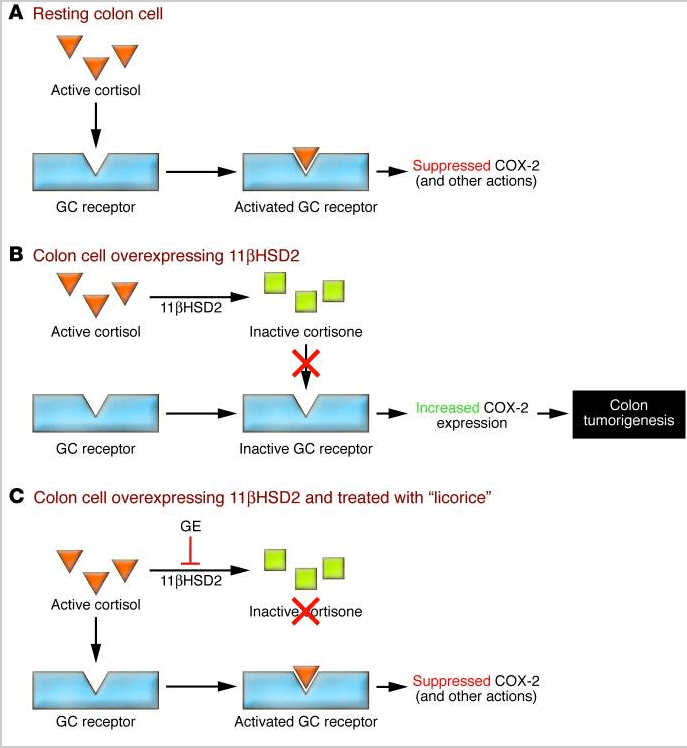
Toxicology
Glycyrrhizin and glycyrrhetinic acid from licorice root sometimes induce edema, hypertension, and hypokalemia in patients treated with higher doses and long-term administration. The mechanism of this side effect, pseudoaldosteronism, has been explained as due to the 11-hydroxy-steroid dehydrogenase inhibitory activity of GL and GA. The excess of endogenous cortisol produced combines with the renal mineral corticoid receptor, which promotes an aldosterone-like action. (1)
Although the dangerous effects mostly happen with high doses of licorice or glycyrrhizin, smaller amounts of licorice may cause side effects. Some people have muscle pain or numbness in the arms and legs. To be safe, ask your provider to monitor your use of licorice.
People with the following conditions should not take licorice in high doses or long-term:
Heart failure, Heart disease, Hormone-sensitive cancers, such as breast, ovarian, uterine, or prostate cancer, Fluid retention, High blood pressure (hypertension), Diabetes, Kidney disease, Liver disease, Low potassium (hypokalemia), Erectile dysfunction (2)
Conclusion
As a medical herbalist for the last 20 years, I have used Licorice with almost every patient in herbal formulae.
The rounded effect of anti-inflammatory, anti-microbial and anti-cancer along with the healing soothing and digestive benefits make Licorice an indispensable remedy.
I have included Licorice in my Herbal Detox program and Digeziad digestive support formula.
It is also part of my BodiTune Protein Drink and BodiTune Capsules
A great addition to your health program
Many Blessings
Brett Elliott ©

